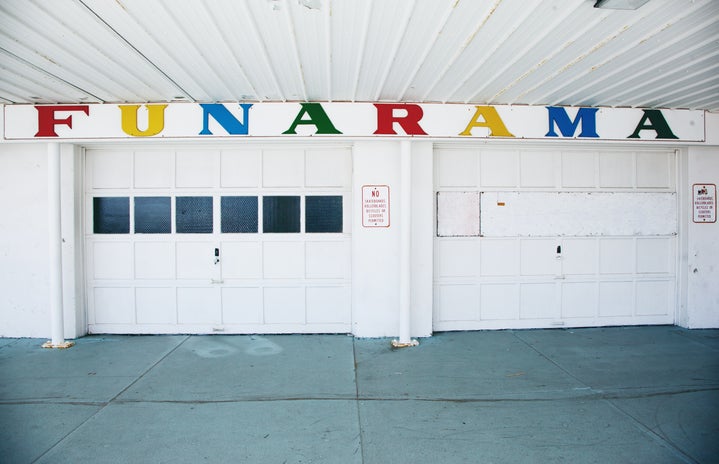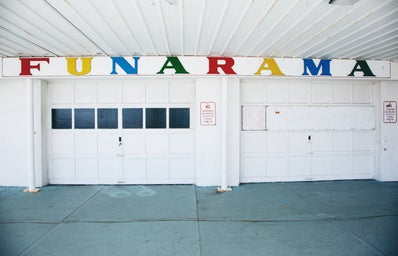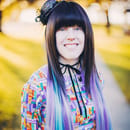I’ll never forget what my girlfriend said to me when she and I were talking about LGBTQ+ representation in the media: “I’d never thought beforehand that my mom would have a problem with me coming out. It wasn’t until I read and watched those stories that I started to wonder if maybe, like all those parents, she would kick me out, too.”
This is just one of many problems with LGBTQ+ representation in the media. It’s getting better, and I can’t argue with that. But it’s still not where it needs to be. And people are finally speaking out about that, which makes me both excited and nervous. Excited because maybe, just maybe, it means that people are taking notice of the problem. And nervous because I’m worried it’s just a passing phase, and it won’t sustain the momentum it’s picked up.
Bury Your Gays is a trope that exists across all media. It basically means that LGBTQ+ characters have a tendency to die rather than lead happy lives. In addition to Bury Your Gays, LGBTQ+ characters are often: relegated to the background, fetishized, stereotyped or tokenized, kicked out, abused, beaten and bullied extensively. Queer characters, especially before the 2000s, were likely to be trauma survivors, and to have their trauma closely linked to their queer identity. Their family members shunned them, so they developed mental illnesses and wound up homeless and alone. They committed suicide. They ran away from home.
Why does this matter? I think my girlfriend’s quote just about sums it up. These representations affect real people. They are the only thing we have to cling to when we’re trying to compare our lives to someone else’s. In many situations, such as when a queer person lives in a very small or isolated area, they may not know any other out LGBTQ+ people. The media may be their only solution when it comes to looking for advice and someone to relate to.
While I was in the process of coming out, I didn’t know very many real-life out LGBTQ+ people. I had two places to turn for support and resources: my online community, and queer media. I read Autostraddle and AfterEllen. I watched LOGO TV. I devoured books with queer characters, like Annie On My Mind.
There were good times, here and there. The L Word, as a show mainly about queer characters, had its fair share of representation, so not everyone led miserable, depressed lives. The problem was that I was coming out as a teen, and The L Word is about adult women, and really aimed at adult women. There weren’t very many TV shows featuring queer teens when I was coming out. I watched South of Nowhere and Degrassi, and I learned how damn hard it is to be gay. How your family kicks you out, sends you to ex-gay therapy and bans you from seeing your significant other. How being LGBTQ+ will tear your entire world apart.
That’s why it’s so important that mainstream media is covering this issue. We, the LGBTQ+ community, have been outraged for years. Autostraddle, AfterEllen, queer blogs, and other LGBTQ+ publications have taken issue with our media representation for years. And that is important. There’s no doubt in mind that actual queer people should be the ones taking the most offense with a lack of representation or with problematic tropes, and that we should be at the forefront and our voices should be heard. But I also think we need allies in this fight. We need non-queer people to be angry, too. We need mainstream publications to cover this. To showcase the issue to a broader audience, to an audience that has never thought about this problem before. That’s why the recent coverage by Entertainment Weekly, Vanity Fair and Variety is so crucial.
I feel the tides beginning to change when it comes to diversity in media. Social media and the Internet is a huge part of that. Just look at the #WeNeedDiverseBooks and #OscarsSoWhite campaigns as an example. #WeNeedDiverseBooks grew so much as a hashtag campaign that it demanded a nonprofit be founded. Several studies in the publishing industry have been released. Just last week, in my graduate course on Principles of Management in Publishing, we spent roughly thirty minutes discussing how the industry can change. #OscarsSoWhite sparked boycotts and encouraged The Academy to institute real change in adding diverse members to their board.
This is the kind of momentum I want to see, and I don’t want it to stop. I hate being angry. It’s tiring, honestly, and sometimes I just want to consume media in a vacuum. I don’t want to think about how Pretty Little Liars has de-gayed Emily Fields, or about Lexa’s death on The 100. But sometimes I have to get angry, because those strong emotions incite reactions. People respond to anger about a lack of representation in the media, just as they respond positively to fantastic representations. I remember how the Internet exploded when Clarke and Lexa got together, how absolutely overjoyed so many fans were. This past week, too, I’ve seen a similar reaction about the relationship between Alec and Magnus on Freeform’s Shadowhunters. Fans are excited to see characters like this; they’re hungry for it.
The most important thing we can do to institute change is to not be content. We need to keep showcasing those strong emotions. We need to show how thrilled we are, as consumers, when diverse characters are represented, when diverse actors are used to play them, when diverse writers and producers are at the helm of a project. We need to show how angry we are when the reverse happens, and like with the #OscarsSoWhite and #WeNeedDiverseBooks campaigns, we need to continually demand better. As part of a business, the media wants fans to be happy, so they continue consuming. We need to prove that if there are more diverse representations, and if those representations aren’t pandering or based on stereotypes or problematic tropes, we’ll use our spending power to support it. And if there aren’t, then we won’t.
It’s long been a stereotype in the media industry that readers won’t pay for diversity. That’s why things like #WheresRey happen, and why books about characters of color or disabled characters aren’t marketed the same way other books are. But we can break that stereotype if we go about instituting change at every level.
If you’re a maker—a current or aspiring journalist, novelist, filmmaker, television producer, or beyond—you can be a part of this change. Take a hard look at the diversity represented in the stories you tell, in your portrayals of events, in the worlds you create. Take the time to ask yourself if you’re including a fair representation, or if you’re tokenizing: if you’ve got just one queer character, or just one character of color, or just one character who uses a wheelchair, and if they tend to fit stereotypes or be relegated to the background. Take the time to ask people of the communities you’re representing to act as beta consumers of your work, so they can point out potentially problematic tropes you may have missed, and so they can offer advice and insight into a world you may not be personally familiar with.
If you have the power, allow diverse makers to create. Hire journalists of color at your news organization. Include books by disabled writers, about disabled characters, at your children’s book publisher. Hire a transgender film producer, and produce more films about transgender characters or real people. Publish that personal essay by an intersex writer. Look for mentally ill actors for your documentaries, even if the film isn’t centered on mental illness. If you aren’t in a position to hire these people directly, support their work when it is out there. Do everything you can to show the industry that this isn’t a trend, and it isn’t going away.
As consumers, we’re responsible for showing that we do care about representations, and not just the ones that personally affect us. I’m queer and disabled, so it’s clear why I care about those experiences being shown. But I’m also able-bodied, white, from a first-world country, college educated, and not a religious or ethnic minority. I cannot ignore the lack of representation for communities I’m not directly a part of. None of us can. This is all of our fight, and it’s time we stand together.


